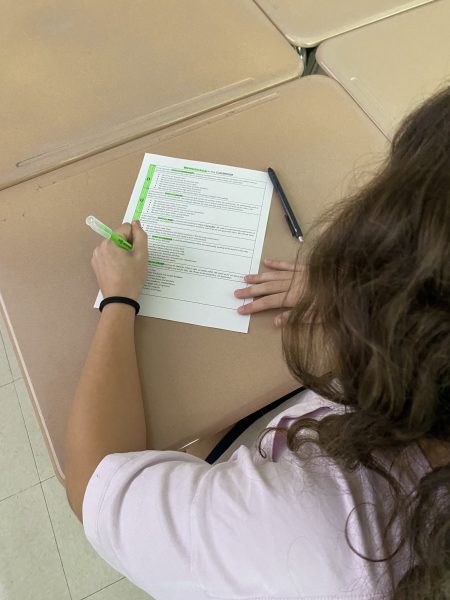No test required to read this article
There are few times more stressful in an eighth grade student’s life than the period between November and January: York placement testing.
As I’m sure we all remember, the EXPLORE test, as well as York-specific exams, can be an overwhelming experience; writing essays in Spanish (and English), recalling how to find the value of “y” in a polynomial function (which I still have yet to understand how to do), and explaining why the ants in “Experiment 1” ate more than those of “Experiment 2” on the science section of EXPLORE.
The entire system of placement may seem a little mysterious to both students and parents. The current method used for all students is a set of placement rubrics, designed to place students in classes that provide a challenge without overwhelming a student.
“Testing isn’t the only marker of success in a program,” said York English Department Chair, Mr. Ryan Doherty.
This rubric system factors in everything from grades, to standardized testing scores, to York placement tests, to academic preparedness.
Rubrics offer data and factual evidence as to why a student is placed where they are upon entrance into high school, making the process much more open and verifiable.
One of the added benefits of a data-driven placement system is that it alleviates some stress from middle school teachers who, prior to placement testing, gave sole input on a student’s placement.
But what happens when these exams and rubrics create more problems than solutions? This year a whopping 47% of the current freshmen class is enrolled in English 9H.
“There has been a dramatic increase in student’s achievement—‘dramatic’ being more than a one percent increase per year” said Dr. Chris Covino, Assistant Principal for Curriculum and Instruction.
He has served as placement coordinator for the past four years and was also a part of the team that created the rubric system.
“There is more emphasis on college-readiness skills [in the middle schools]” and “students are more prepared to come to high school than in the past,” said Covino, who credits this increase to smarter and more well-prepared eighth grade students.
“The last thing that you want for an incoming freshman is for them to feel overwhelmed,” said Doherty.
He stressed the fact that all of the students in 9H are placed properly according to the rubric and were not simply placed in a higher-level class because of a faulty system.
Expansion of higher level classes is not just situational to York; District 205 middle schools have been experiencing the same rate of growth.
Over the past three years, the REACH English program at Churchville has expanded from one block period to two in all three grade levels.
Regarding whether the future held stricter standards for placement or more classes levels, Covino said that, while there is no definitive answer, there may be a change in rubric, specifically because of the changes that ACT has made to the EXPLORE test and subsequent assessments.

Matt Bourke, senior, is the ThisIsYork.org Editor at York. In his limited free time, Matt works with YTV and York-hi, serves as President of the Illinois...





